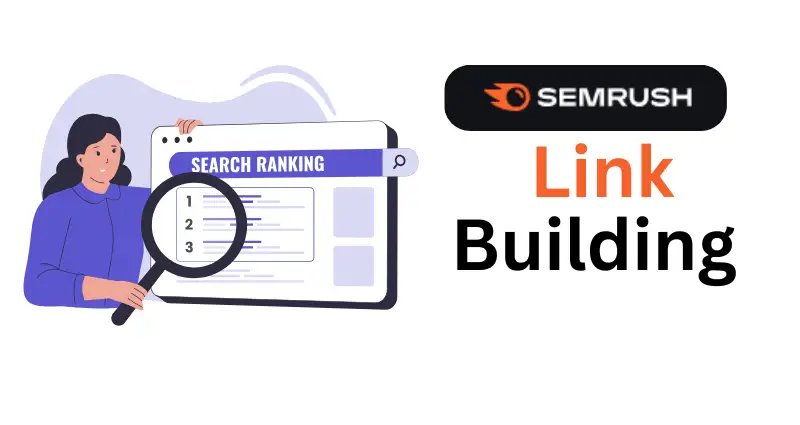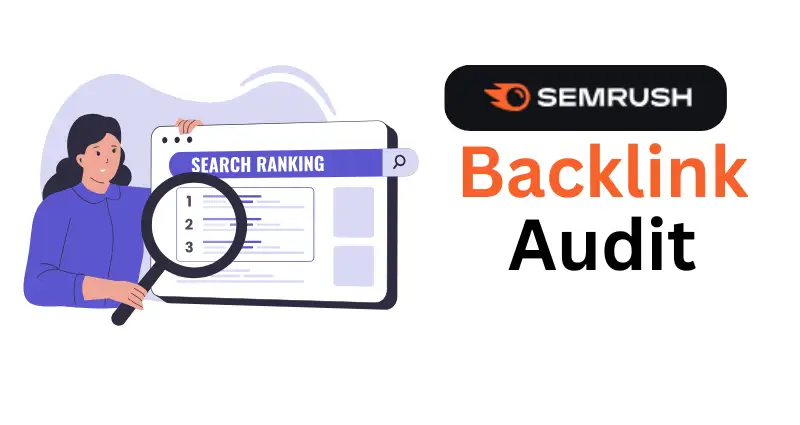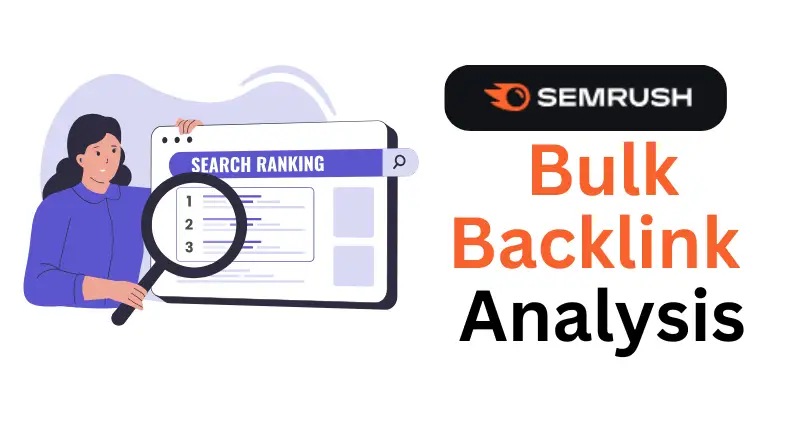Link building is one of the most challenging yet rewarding aspects of SEO.
It’s like trying to win a popularity contest, except your competitors are robots, algorithms, and sometimes shady tactics.
Thankfully, SEMrush’s Link Building Tool is here to give you a fighting chance.
This guide focuses on practical steps to make the most of this tool.

Why Use the SEMrush Link Building Tool?
Think of it as your virtual assistant for link outreach. This tool:
- Finds opportunities: Identifies sites likely to give you quality backlinks.
- Manages outreach: Tracks your progress, so you’re not drowning in spreadsheets.
- Prioritizes targets: Saves you time by focusing on the links that matter most.
Humor Break: It’s like having a personal trainer for your website. Except it won’t judge you for eating cookies while working.
Step-by-Step Guide to Using the SEMrush Link Building Tool
1. Set Up Your Campaign
Start by setting up a link-building project in SEMrush:
- Navigate to the “Link Building Tool” under the “SEO” menu.
- Enter your domain and target keywords.
- Define your competitors (SEMrush will also suggest some based on your niche).
| Field | Input Example |
|---|---|
| Domain | yourwebsite.com |
| Target Keywords | “best running shoes,” “marathon training” |
| Competitors | competitor1.com, competitor2.com |
Pro Tip: Focus on keywords and competitors that align with your SEO strategy. Going too broad can dilute your efforts.
2. Identify Link Prospects
Once your campaign is set up, SEMrush will generate a list of potential link opportunities based on your input. These are categorized as:
- Resource Pages: Websites listing resources relevant to your niche.
- Guest Posting Opportunities: Blogs accepting articles from external writers.
- Competitor Backlinks: Sites linking to your competitors but not yet to you.
Filters You Can Apply:
| Filter | Use Case |
| Domain Authority (DA) | Focus on high-authority sites (DA > 40). |
| Follow vs. No-Follow | Target “follow” links for SEO impact. |
| Link Type | Prioritize blogs, forums, or news sites. |
Humor Break: Think of this as online dating for backlinks. You’re looking for “quality matches,” not spammy profiles.
3. Prioritize Your Targets
Not all link prospects are created equal.
SEMrush assigns a “Rating” to each prospect, which factors in their authority, relevance, and difficulty. Use this rating to:
- Focus on the high-value opportunities first.
- Avoid wasting time on low-quality or irrelevant sites.
| Priority | Action |
| High (Rating > 70) | Start outreach immediately. |
| Medium (Rating 40-70) | Add to your pipeline for later follow-up. |
| Low (Rating < 40) | Skip unless you’re desperate for links. |
4. Plan Your Outreach
Once you’ve selected your targets, it’s time to craft outreach emails. SEMrush simplifies this by offering templates, but personalization is key.
Sample Outreach Workflow:
- Choose a Template: Select from SEMrush’s suggestions or create your own.
- Customize the Message: Mention something specific about the site (e.g., a recent blog post you liked).
- Track Responses: SEMrush lets you monitor who’s opened, clicked, or replied to your emails.
| Outreach Tip | Why It Works |
| Be Personal | Shows you’re not spamming. |
| Offer Value | Explain how linking to you benefits them. |
| Keep It Short | Nobody likes a wall of text. |
Humor Break: Think of outreach emails like first dates. Don’t talk about yourself the whole time—ask questions, show interest, and for heaven’s sake, spell their name right.
5. Monitor and Improve
Link building is a marathon, not a sprint. SEMrush helps you track your progress and refine your approach:
- Track New Links: See which links have been successfully built.
- Lost Links Report: Recover any links that might have been removed.
- Analyze Metrics: Measure referral traffic and rankings to gauge success.
Example Dashboard Metrics:
| Metric | What It Tells You |
| New Links Gained | How many new backlinks you’ve built. |
| Referring Domains | Growth of unique domains linking to you. |
| Toxic Score | Potential risks from spammy backlinks. |
Use Cases: How Real Businesses Benefit from the SEMrush Link Building Tool
1. Recovering Lost Rankings
A local bakery noticed their organic traffic dropped after a Google update. Using SEMrush, they:
- Identified lost backlinks.
- Reached out to recover links from relevant food blogs.
- Built new links through guest posts on recipe sites.
2. Launching a New Product
An e-commerce store launching a new product line used the tool to:
- Find resource pages listing “best gadgets for 2024.”
- Secure guest posts on tech review sites.
- Track the referral traffic from these links, which boosted sales.
Common Pitfalls and How to Avoid Them
- Ignoring Relevance: A backlink from a car dealership won’t help your fitness blog.
- Fix: Always prioritize niche relevance over sheer authority.
- Not Following Up: Many prospects won’t respond to your first email.
- Fix: Set reminders to follow up politely (SEMrush has this feature built-in).
- Overusing Templates: Generic emails scream “spam.”
- Fix: Personalize every outreach email, even if it’s just tweaking a line or two.
Wrapping It Up
SEMrush’s Link Building Tool isn’t just another SEO gadget; it’s a comprehensive assistant that takes the pain out of prospecting, outreach, and tracking.
Whether you’re a seasoned SEO pro or a small business owner, mastering this tool will elevate your link-building game.
Remember, link building is about quality over quantity.
So take it slow, stay consistent, and don’t forget to laugh at the process (especially when you’re chasing links from sites that seem to ghost you like a bad Tinder match).
Happy link building!






